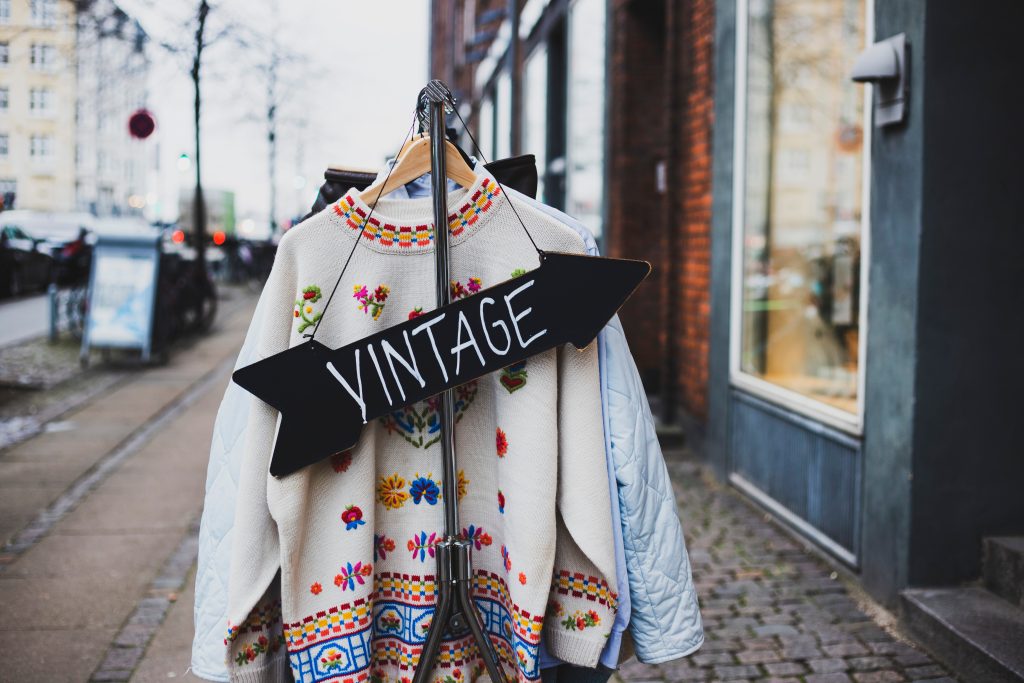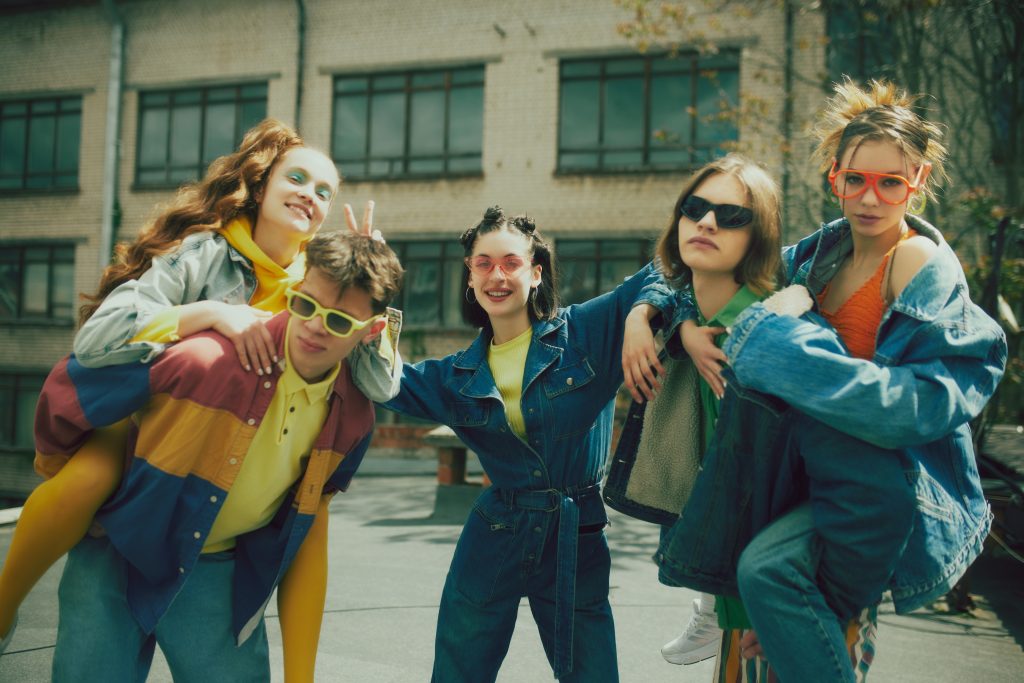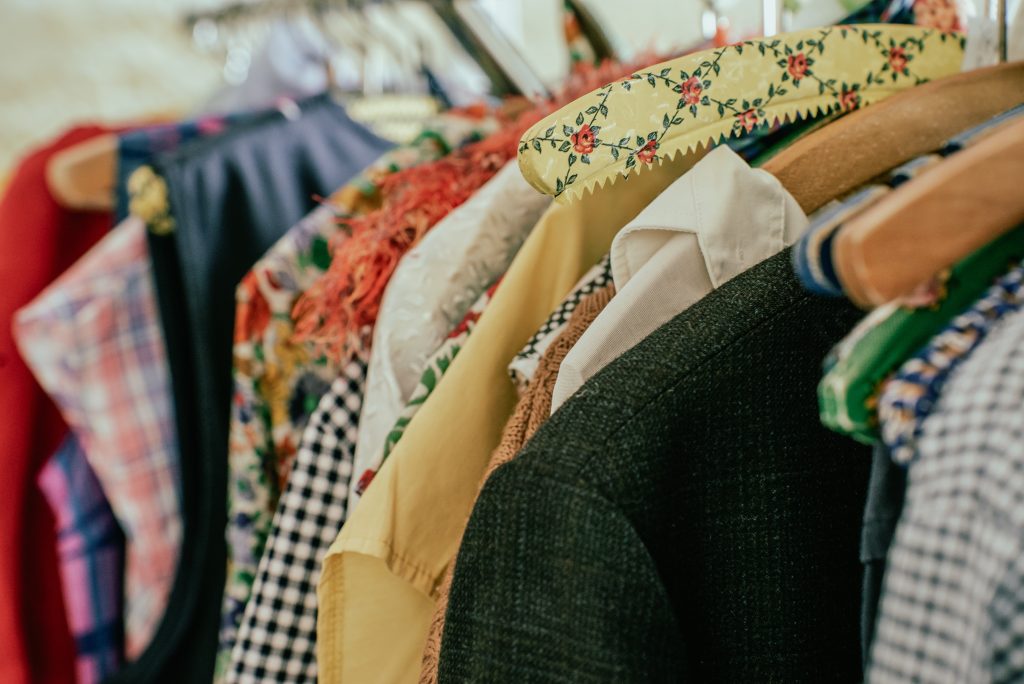Shopping for new clothes can be fun. Today, however, with the increasing numbers of thrift stores, Goodwill, and other vendors, many Americans go out shopping for used clothes, especially if they’re vintage. Like a type of modern treasure hunt, searching for vintage clothes can be exciting and rewarding. The question many have, though, is how to identify vintage clothes. After all, to most folks, one pair of jeans looks pretty much like every other pair of jeans.
If you’re interested in collecting and wearing vintage clothes, but don’t know how to identify them, this article is for you! It’s all about identifying and storing valuable vintage clothes, brought to you by NSA Storage! To outfit yourself in the far out, funky, and financially valuable looks of the past, read on!
What Are Vintage Clothes?
Experts define vintage clothes as any article of clothing that is at least 20 years old. Today, that includes any clothing made before the early 2000s to as far back as the 1920s and beyond.

Of course, as with almost any product, not every article of old clothing is valuable. There are certain things that take an ordinary piece of clothing and, with time and care, turn it into something “vintage”. For example:
- Vintage clothes are often made with higher quality fabrics and a higher level of craftsmanship
- Some of the most valuable vintage clothing items are one-of-a-kind or were made by a specific designer
- Specific manufacturer labels, especially if the company no longer exists, can turn a regular article of clothing into something vintage
- Vintage clothing often has unique features not found on today’s bulk-made clothing (See below.)
Top 4 Tips for Identifying Vintage Clothes
The tips below are all used by vintage clothing aficionados and can be invaluable for identifying the most valuable pieces.
1. Check the Tag
By far the easiest way to determine if a piece of clothing is vintage is to check the tag. Of course, not all articles of clothing will have tags, but most will. When it does, look for these telltale signs:
- Older fonts and logos are a telltale sign that something is vintage.
- A “Made in USA” tag can indicate vintage, but not always.
- A Logo from a clothing company that no longer exists. (Halston, Jonathan Logan, Merry Hull, Norma Kamali, etc.)
- Union labels from the 1950s through the 1980s.
Here are a few more vintage brands that are coveted by collectors and often more valuable:
- Chanel
- Pendleton
- Dior
- ILGWU (International Ladies’ Garment Workers’ Union)
- Coach
- Levi’s
- Gunne Sax by Jessica McLintock
- I. Magnin
- Evan Piccone
- Butt Knit
- Young Eduardian
2. Look Closely and Feel the Fabric
For hobbyists and experts alike, one of the easiest ways to detect a vintage clothing piece is simply to feel the fabric. Most, but not all, vintage clothing was made with real, organic materials that are heavier, more textured, and less stretchy than today’s clothing. Some of the most sought-after fabrics include these classics:
- Linen– Light and airy, linen is cool to the touch and even a bit rough at first. With time, it becomes softer.
- Thick, heavy and super-warm, wool can be itchy if it’s not a fine grade like Merino wool.
- Silk, which is, as you might imagine, silky smooth. It’s also cool to the touch but warms quickly, and can feel slippery.
- The classic, 100% cotton, is soft and warm to the touch, and gets softer with age and washing.
3. Check Out the Stitching
Most people don’t look closely, if at all, at the stitching of their clothes. Experts, though, look very closely, as the stitching can be a dead giveaway to whether a piece is vintage or not; some even bring a magnifying glass to get a better look.
Here are a few of the stitches and other signs that you’ll find on many vintage clothing pieces:
- Unique buttons and other baubles
- Heavy-duty metal zippers
- Double seams
- Hand-sewn (and not 100% perfect) finishes. Imperfect but well-sewn vintage clothes can often be more valuable!
4. Examine the Style and Cut
One easy way to determine if clothing is vintage is to look at its style and cut. Clothing from the 1960s will look very different when compared to clothing from the ’80s because different styles were popular and fashionable. To be a top collector of vintage clothing, you need to know what these changes were, and how to spot them.

With practice, you’ll be able to quickly tell a 1940s tailored, hourglass skirt from a 1990s grunge, denim skirt! Below are the 5 biggest time-periods in fashion from the 1940s onward, and their particular styles and cuts:
- 1920s-1930s: Drop waist dresses, 3-piece suits, cloche hats, sleeveless cuts
- 1940s-50s: Finely tailored, hourglass cuts, fuller skirts
- 1960s: The “Mod” style, shift dresses, bright, bold patterns
- 1970s: Bell-bottoms, earthy colors, flowing, lightweight fabrics
- 1980s: Bold, bright colors, overly-large shoulder pads, oversized blazers, bigger cuts
- 1990s: Minimalist cuts, grunge, worn-out looks, denim everything
The Best Places to Find Vintage Clothing
If you’re just starting your vintage clothing hobby and need to know where to look, the list below will be very helpful:
- Goodwill. This nationwide organization gets donations from millions of people every day. Even better, their prices are very reasonable.
- Thrift stores. Almost Every town in America has at least one thrift store, if not several. Thrift stores can be a treasure trove for vintage clothing collectors.
- Garage sales. An annual right of spring, you can find all sorts of amazing clothing at local garage sales.
- Flea markets. Depending on where you live, your local flea market might be a great place to search.
- eBay and Facebook Marketplace. These two online Resellers, as well as several others, can be fantastic. Facebook Marketplace in particular can put you in touch with folks right in your town selling their vintage clothes.
Top Tips for Storing Vintage Clothes
If you have a few articles of vintage clothing, storing them in your closet at home is easiest. There they should be dry, cool and out of the sun, which is perfect.
If you have a large collection of vintage clothing, however, storing it correctly is important. Like anything, if not stored correctly, vintage clothing can degrade and deteriorate, often to the point where it’s no longer valuable.
Below are some top tips for storing vintage clothes to make sure they stay in pristine condition, long-term:
- Clean and Dry Everything Well– Before storing any vintage clothes, be sure to clean them and dry them well.You need to remove anything that could cause a stain or discoloration. Plus, your clothes should be bone dry because any trapped moisture could create mold or mildew that could ruin them.
- Don’t Pack Your Vintage Clothing Too Tightly– If you’re moving, you can pack clothing tightly because you will be taking it back out of the boxes in a few days. However, with vintage clothing, you should pack it much more loosely in the boxes or containers you use. That way, the fabric won’t get wrinkled or damaged, sometimes permanently, while stored.
- Use Top-Quality Hangers– Experts recommend using wooden or padded hangers for hanging vintage clothes.
- Consider Climate-Controlled Storage– If you have a genuinely large collection of vintage clothing, storing it in a climate-controlled storage unit is recommended. These specialized storage units maintain a stable temperature and humidity throughout the year. That adds an extra layer of protection to keep your vintage clothing collection in pristine condition, especially long-term.
- Use Acid-Free Tissue Paper– With vintage clothing that you will fold, use acid free tissue paper between each fold for extra protection.
- Don’t use Plastic Containers or Bags– While plastic might keep dirt and other junk off of your clothing, it also traps in moisture. That’s the last thing you want since, as we know, moisture can cause mold and mildew. Garment bags or wardrobe boxes are a better choice.
Store Clothing with NSA Storage
Whether you’ve just gotten into the hobby or are a bonafide vintage clothing expert, we hope the information provided today has been helpful. Collecting vintage clothes can be a rewarding and exciting hobby, and there is certainly no lack of vintage clothing on the market!
If you have a collection of vintage clothing, or anything else, that you need to store, NSA Storage can help. We provide clean, safe, and secure storage units across the United States. That includes climate-controlled storage units if you have a vintage clothing collection that demands the ultimate protection! Rent a storage unit online today and it will be ready to store your clothing when you arrive.





